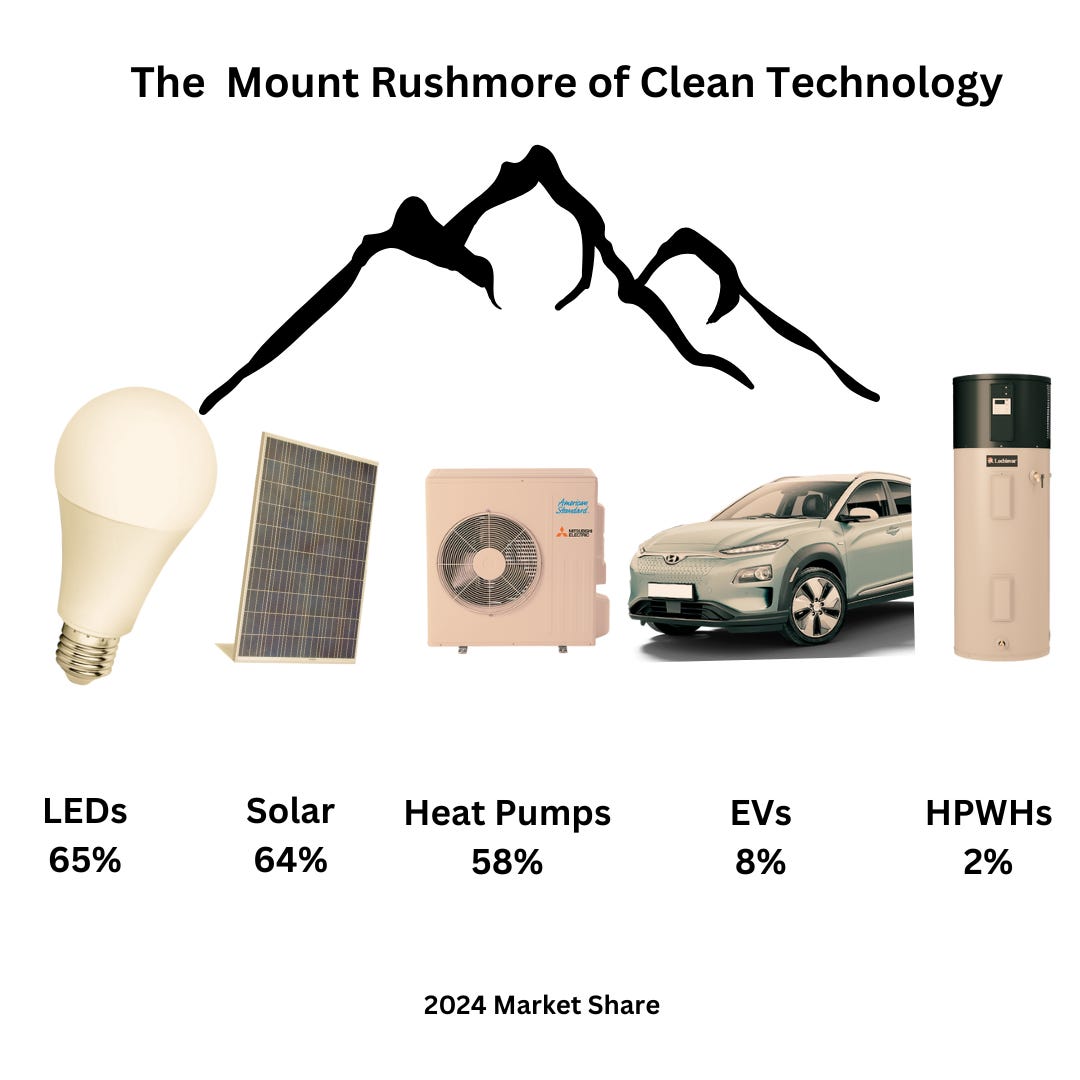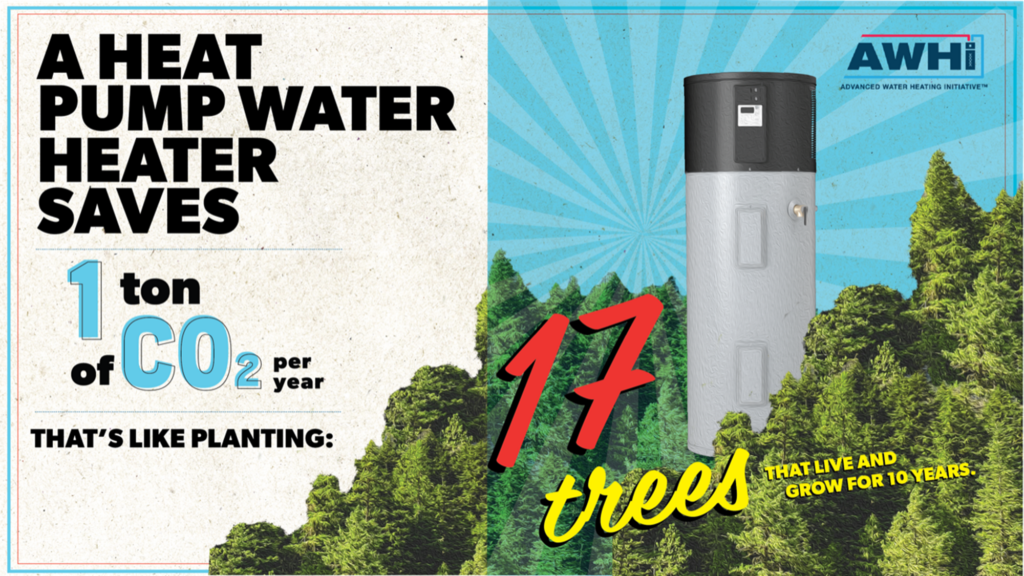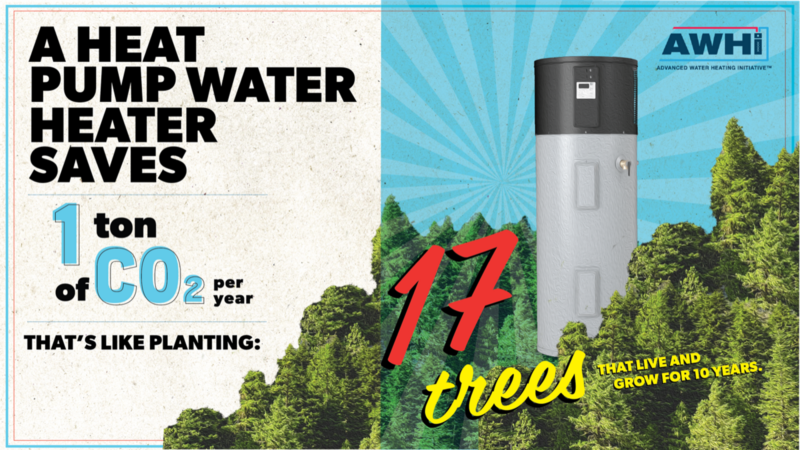Sign up for CleanTechnica’s Weekly Substack for Zach and Scott’s in-depth analyses and high level summaries, sign up for our daily newsletter, and/or follow us on Google News!
If we were to make a clean tech Mt. Rushmore this Earth Day in honor of the technologies that make our lives better while reducing our impact, we might carve core technologies like solar panels, electric vehicles (EVs), LED light bulbs, and heat pumps for space heating and cooling into a mountainside. However, we would be missing one key player. This Earth Day, it’s high time to add a new face to this cleantech Mt. Rushmore — the heat pump water heater (HPWH).

While most people hardly ever think about their water heaters in general, let alone as a key tool to fight climate change, it’s time we elevated this humble technology to the iconic status it deserves.
Heating water is very energy intensive. It accounts for 17–32% of a typical home’s energy usage, and is the second highest energy user in a home behind space heating (and in multi-family buildings, it’s the highest energy user).
HPWHs are three to five times more efficient than gas or electric resistance water heaters, which means they reduce carbon emissions by a lot. They also run on electricity, not fossil fuels, which can (and is) being decarbonized quickly.
The Advanced Water Heating Initiative (AWHI) did a deep dive and found that replacing a gas-powered water heater with a HPWH can save more than 2,000 pounds of CO2 emissions every year. 2,000 pounds (or 1 ton) of annually saved CO2 is an enormous amount, especially when you consider that once a HPWH is installed, the only action that’s required (besides easy maintenance) is to continue to take luxurious showers, or in our case, bubble baths.

What does 2,000 lb of CO2 equate to?
It can be hard to conceptualize what 1 ton of CO2 looks like, so here are some helpful analogies. One ton of CO2 is the same pollution emitted when a person takes a round trip flight from LA to New York or drives a sedan 4,000 miles (all calcs taken from Carbon Footprint Calculator).

Or if trees are your preferred analogy, 1 year with a HPWH is the CO2 equivalent of growing more than 17 trees for 10 years.

HPWHs save not only a lot of energy and money, but perhaps most importantly, for the future of our world, they save a literal ton of CO2 every year they’re in operation.
Which is why they deserve their very own special spot atop the Clean Tech Mt. Rushmore. This Earth Day get yourself a heat pump water heater. Here’s a link to ENERGY STAR’s HPWH Installer finder to get you started.
Also — spread the good news with Advanced Water Heating Initiative’s one page factsheet about these savings, it’s available at www.advancedwaterheatinginitiative.org/resources.

Whether you have solar power or not, please complete our latest solar power survey.

Have a tip for CleanTechnica? Want to advertise? Want to suggest a guest for our CleanTech Talk podcast? Contact us here.
Sign up for our daily newsletter for 15 new cleantech stories a day. Or sign up for our weekly one if daily is too frequent.
CleanTechnica uses affiliate links. See our policy here.
CleanTechnica’s Comment Policy

